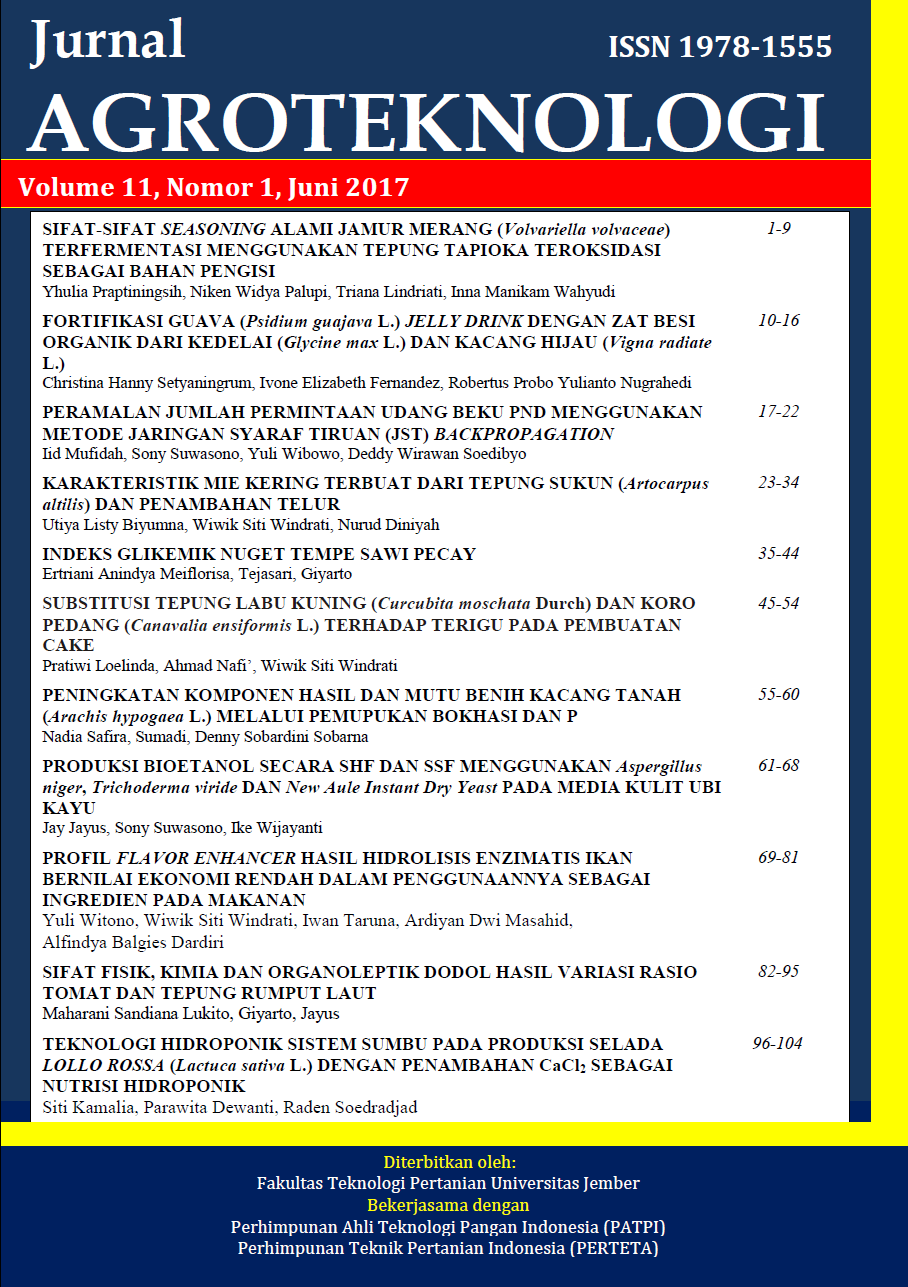SIFAT FISIK, KIMIA DAN ORGANOLEPTIK DODOL HASIL VARIASI RASIO TOMAT DAN TEPUNG RUMPUT LAUT
DOI:
https://doi.org/10.19184/j-agt.v11i1.5450Abstract
The process of making a healty meal that does not contain endangering ingredients is truly needed to keep the complete nutritional intake of people who generally consume the meals. Tomato has complete contents including likopen contents, so that product coloring is not needed for certain food products. Dodol commonly made with the raw ingredients sticy rice flour, sugar, and coconut milk which has chewy texture if added and has a high nutrients. The type od seaweed used by this product is Eucheuma cottoni that can result carrageenan which can increase the plasticity and the sturdy texture of dodol. The research aimed to know the effect of ratio tomato and seaweed dodol formulation and also to know the best dodol formulation using seaweed and tomato based on the result of sensory and phisiochemical quality. This study was used a completely randomized design with one single factor that is the comparation of tomato and seaweed composition. This analysis showed that the of with ratio of tomato and seaweed flour significantly affected the brightness (L), a*, b*, the chemical includes water content, dust content, protein content, fiber content, and carbohydrat content dodol. However, it has no really influential of the fat contents. The good treatment and favorites of dodol was combination of 80% tomato and 20% seaweed flour. The best dodol has lightness (L) = 51,83, value of a*= 6,79, value of b*= 6,67, texture 597,70 g/5 mm, water contents about 23 %, dust content about 1,69%, fat contents about6,13 %, protein contents about 11,17 %, rugged fiber content about 1,95 %, and carbohydrat content about 57,74 %. The average of a preference colour, aroma, texture, flavor, and the overall favorite successive result hardness 3,27 ; 3,73 ; 3,60 ; 3,23; 3,77 (preferences value medium up to high).
Keywords: dodol, tomato, seaweed flour
Downloads
Downloads
Published
Issue
Section
License
Jurnal Agroteknologi has CC-BY-SA or an equivalent license as the optimal license for the publication, distribution, use, and reuse of scholarly work. Authors who publish with this journal retain copyright and grant the journal the right of first publication with the work simultaneously licensed under a Creative Commons Attribution-ShareAlike 4.0 International License that allows others to share the work with an acknowledgment of the work's authorship and initial publication in this journal.
 JURNAL AGROTEKNOLOGI
JURNAL AGROTEKNOLOGI 








.png)
